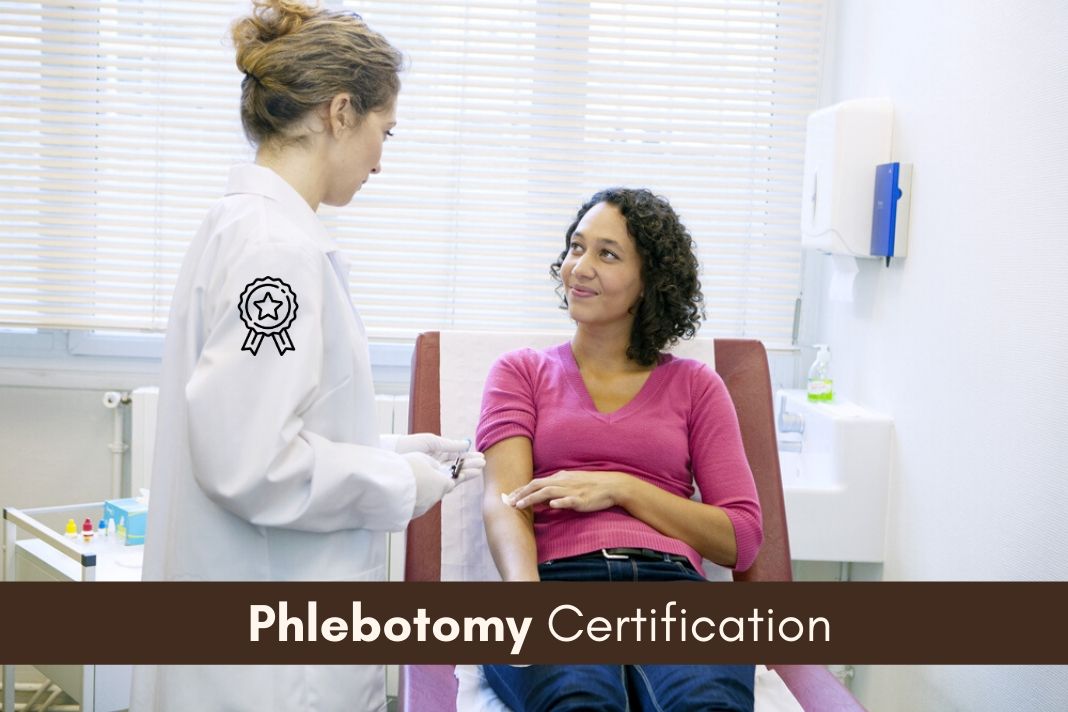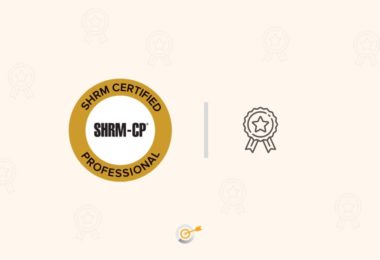
Phlebotomy Technicians are critical team members at hospitals, diagnostic laboratories, and blood donor centers. As advancements in medical technology rise, it’s an especially exciting time to begin a career in this thriving field. Earning your Phlebotomy Technician Certification (CPT) certification can give employers confidence in your skills and abilities.
Hospitals, laboratories, and other employers have an increasing demand for phlebotomists.
Most seek, and many require professional certification. With a Phlebotomy Certification, CPT certification, you’ll have the credentials you need to set yourself apart from other applicants as you embark on a rewarding healthcare career. As more employers require phlebotomy certifications, a CPT will help improve your marketability in a growing and rewarding field.
As a Phlebotomy Technician, you may perform some or all of the following tasks:
- Draw blood from patients and blood donors
- Evaluate patients’ ability to withstand the procedure
- Explain blood-drawing procedure to patients and answer questions
- Perform basic point of care testing, such as blood glucose levels
- Prepare blood, urine and other specimens for testing
- Verify patient/donor identity
- Maintain medical equipment such as needles, test tubes, and blood vials
If you’re interested in earning your certification, there are five widely-recognized certifying bodies through which you can become a certified phlebotomist:
- American Society for Clinical Pathology
- American Society of Phlebotomy Technicians
- National Phlebotomy Association
- National Healthcareer Association
- National Center for Competency Testing
Recommended Articles
A Guide on How to Become a Phlebotomist
How Much Can You Really Earn as a Phlebotomist?
Education
The process of becoming a phlebotomist can take a year or less to complete, depending on the education program and whether a student pursues national certification. A few states also have separate certification requirements for employment in that state, and this may make the process longer. Education programs can take from as little as eight weeks to less than a year to finish depending upon the school type and program in which students enroll. Programs at vocational schools may be quicker, whereas those at community colleges could take longer. Completing both the instructional and clinical hours of a program is essential to obtaining a certificate or diploma and then to finding employment. National certification is generally not required but can be helpful in obtaining employment
To be accepted into phlebotomy programs, students should have a high school diploma or a GED. In fact, most programs can be entered directly upon completing high school. A phlebotomy education typically takes a year or less to complete. Graduates receive a certificate or diploma. These programs, available through vocational schools and community colleges, include education in anatomy, medical terminology, and physiology. While certification is not required in all states, it does increase employability. California, Louisiana, Nevada, and Washington do require phlebotomist to hold a certification. Continuing certification requirements will vary based on the organization that certification was initially obtained through. An annual fee and completion of continuing education are typical requirements.
Certification Requirements for the Five Certifying Bodies
American Society for Clinical Pathology
In order to take your Phlebotomy Technician (PBT) exam, the ASCP offers seven routes to eligibility:
- High school graduation or equivalent and completion of a NAACLS-approved phlebotomy program within the last five years
- High school graduation and completion of an accepted two-part phlebotomy program that consists of 40 hours of classroom training and 100 hours of clinical training in an accredited lab with a minimum of 100 successful venipunctures and skin punctures
- The completion of one year of accepted full-time work experience in an accredited lab within the past five year
- The completion of RN, LPN, or other accepted allied health professional education that includes phlebotomy training with a minimum of 100 successful unaided blood collections.
- MT, MLS or MLT certification
- DPT certification and a minimum of 100 successful unaided non-donor blood collections within the past five years
- Completion of a phlebotomy program approved by the California Department of Public Health within the past five years
American Society of Phlebotomy Technicians
- One full year as a part-time phlebotomist or six months as a full-time phlebotomist
- Successful completion of an accredited phlebotomy training program
- At least 100 documented successful venipunctures
- Five documented skin punctures
- A current ASPT membership
National Phlebotomy Association
- You need to have one year of prior experience as a phlebotomist and be currently employed.
The program you attend must include:
- Venipuncture techniques
- A hands-on clinical practical internship
- 160 classroom hours in addition to the practical clinical internship and 16 continuing education units
National Healthcareer Association
The NHA Phlebotomy Technician Certification exam fee is $105. To be eligible for the NHA exam, you’ll need to have successfully completed a training program within the past five years. You’ll need to have successfully performed the following procedures:
- 30 venipunctures and ten capillary sticks on live humans
- Have a high school diploma or GED
National Center for Competency Testing
The NCCT offers three ways to earn your certification:
- Be a current student in a phlebotomy technician program from an NCCT-authorized school or have graduated from an NCCT-authorized school within the past five years
- Have completed one year of verifiable full-time employment as a phlebotomy technician practitioner within the past five years
- Have completed your phlebotomy technician training or the equivalent while performing service in the US military within the past five years
Before you can take the test, you’ll need:
- A high school diploma or GED
- A phlebotomy technician diploma or certificate of completion—or an official transcript with graduation date—from an approved program
- Completion of the NCCT Phlebotomy Technician Certification Critical Skill Competency form
In addition to the five phlebotomist certification agencies listed above, you can also receive your phlebotomist license from The American Medical Technologists, a non-profit certification agency.
AMT License
To be eligible for the American Medical Technologists exam, which grants the designation of Registered Phlebotomy Technician (RPT), applicants must graduate from a phlebotomy program that includes a minimum of 120 didactic clock hours. The program should also be approved by the US Department of Education.
You must also have completed 1,040 hours of accepted work experience as a phlebotomy tech within the last three years.




